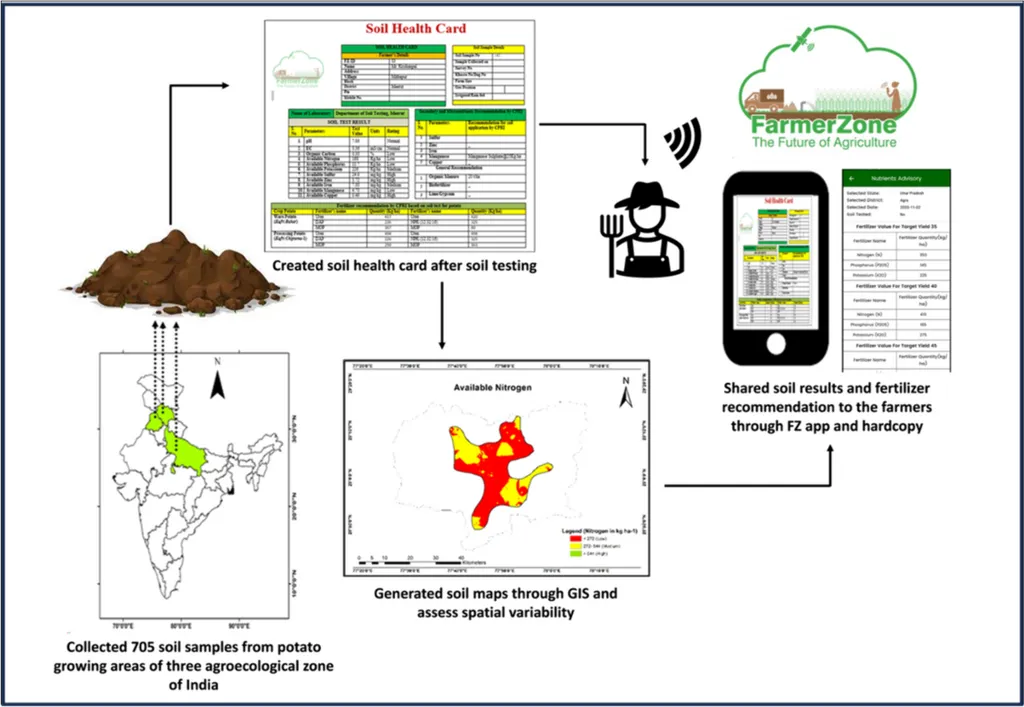In the heart of India’s Odisha state, a groundbreaking study is reshaping how farmers approach soil nutrition, promising to boost productivity and slash costs. Researchers, led by Bandita Jena from the AICRP on Micronutrients at the OUAT in Bhubaneswar, have harnessed the power of GPS and GIS technology to create detailed soil fertility maps for Deogarh district’s north western plateau zone. This innovative approach, published in the ‘International Journal of Bio-Resource and Stress Management’, is set to revolutionize precision agriculture in the region.
The study underscores the critical role of micronutrients in sustainable agriculture. “Blanket application of micronutrient fertilizers without understanding the native nutrient status can lead to deficiency or toxicity,” explains Jena. The research reveals a stark reality: a significant portion of the district’s soil is deficient in essential nutrients like boron, sulfur, and zinc, while being sufficiently endowed with others like iron, manganese, and copper.
The implications for the agriculture sector are profound. Farmers in Deogarh and similar regions can now make informed decisions about fertilizer use, targeting only the nutrients their soil lacks. This precision approach not only saves on costly inputs but also enhances crop quality and yield. As Jena puts it, “These maps will help the farming community use secondary and micro nutrients more effectively, saving costly inputs and increasing production and productivity.”
The study’s methodology is as impressive as its findings. Researchers collected 208 georeferenced soil samples from three blocks of Deogarh, analyzing them with expert precision. Using ARC GIS software, they digitized the data, creating clear maps that delineate areas of nutrient deficiency and sufficiency. This level of detail is a game-changer for farmers, offering a roadmap to optimize soil health and crop performance.
The research also highlights the potential of technology in agriculture. By leveraging GPS and GIS, farmers can access detailed, location-specific data that guides their decisions. This tech-driven approach could be a model for other regions, fostering a new era of precision agriculture that is both sustainable and profitable.
Looking ahead, this study could shape future developments in soil management and nutrient application. As more regions adopt similar technologies, we may see a global shift towards data-driven farming practices. This could lead to increased crop yields, improved soil health, and a more sustainable agriculture sector.
In the meantime, farmers in Deogarh are already reaping the benefits. With their new soil fertility maps in hand, they are better equipped to navigate the complexities of soil nutrition, ensuring their crops thrive in a changing agricultural landscape. As the world grapples with the challenges of feeding a growing population, studies like this offer a beacon of hope, demonstrating the power of technology and innovation in agriculture.

